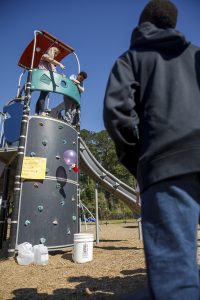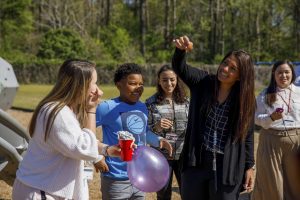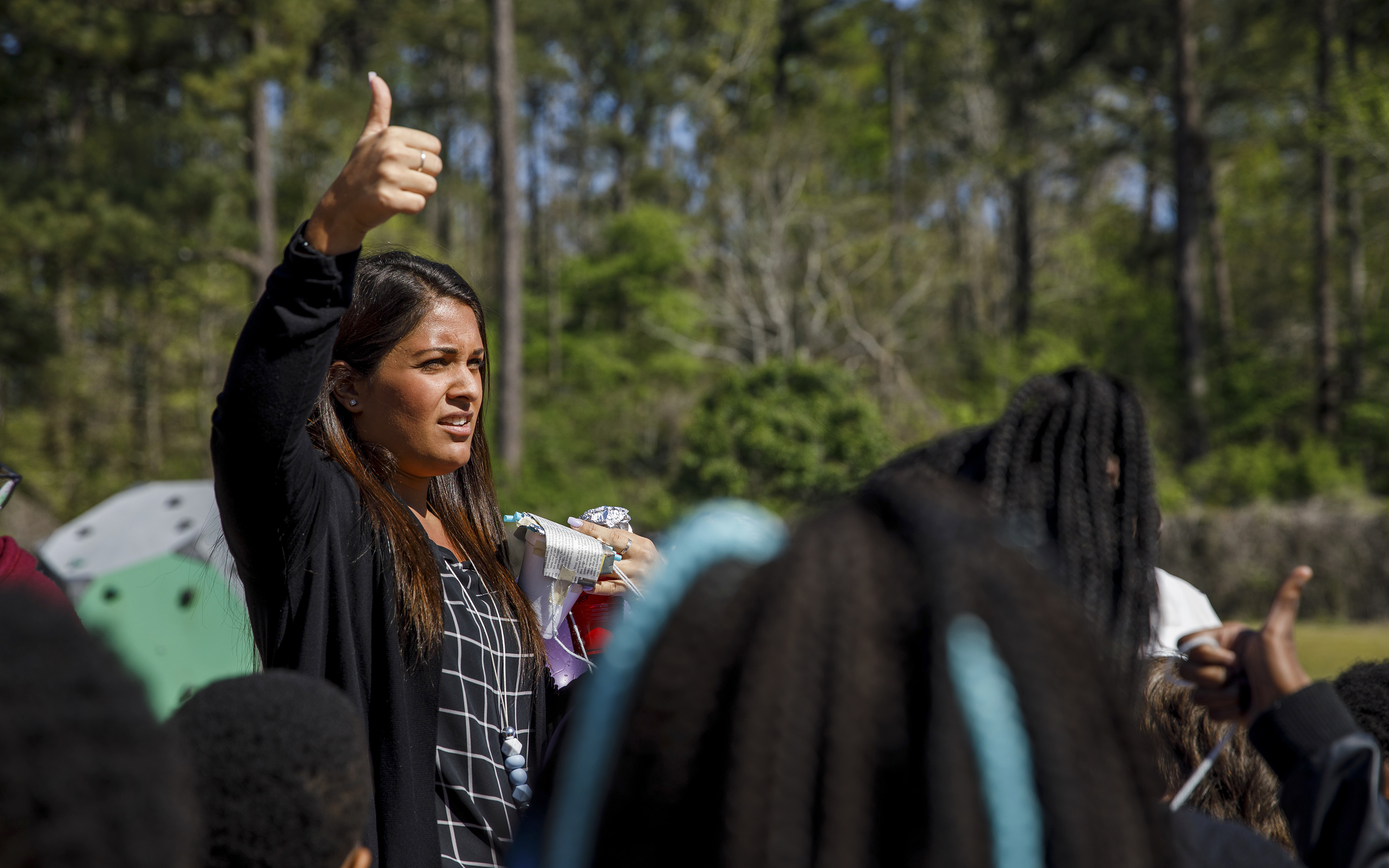Education majors learn, apply STEM teaching initiatives at local elementary school

One breaks.
Another survives.
That’s what can happen when fourth and fifth graders drop raw – but somewhat protected – eggs from 20 feet above ground.
The students, using a playground as their lab, repurposed ordinary items to simulate an astronaut in a lunar lander. Although the experiment was far smaller in scale and crude in materials compared to the vehicles used to land on the moon, the principles are similar: gravity, kinetic energy and distance must all be factored into the designs. And for young, curious minds, this experiment is a gateway to more exploration into science, technology, engineering and math (STEM), with teachers serving as gatekeepers.
This spring, University of Alabama elementary education majors were leading these experiments, wrapping up a month’s worth of STEM activities with four different classes at Woodland Forrest Elementary School. The collaborative projects included a simulation of an oil spill and the creation of an athletic shoe prototype from basic materials. The latter project used the real-life incident of Duke University basketball player Zion Williamson’s shoe tearing to shreds during a game to underscore the importance of the activity.
Managing a team
These activities have clear teaching and learning benchmarks designed to keep students on task and to unearth creativity, said Ashlyn Turner, a Tuscaloosa native and junior at UA.
“In our lesson plan, we had to engage, explore, explain and evaluate,” she said. “Then we embedded different questions to ask the students about their shoes, the things they needed and what the shoes needed to do. Continuing to question each group kept them thinking and on track. For instance, one group had rubber bands that went over the shoe and made it have a grip at the bottom. I didn’t think about that until they said it – they wanted grip when they turned.”
The UA students, in essence, served as team project managers one might find at a tech or engineering firm. It’s a unique role-playing exercise for these future teachers, who must also combine traditional conflict resolution and classroom management practices within the construct of the activity. At times, these variables forced them to pivot from their original plans, Turner said.
“First, we had the students pick a group. Then, they had to figure out how to design their shoe, which caused a little bit of an argument,” she said. “So, we had to go around and make them vote on what they wanted. Then, we were going to have them pick someone to test the shoe, which prompted another argument. We decided to change it to where they would design the shoe for their teacher, so there was a common denominator.”
Transforming education

Taylor Lamon, a fifth-grade teacher at Woodland Forrest and UA alumna, teaches hands-on science with the Alabama Math Science and Technology Initiative, which provides teaching resources and professional development for K-12 teachers in the state. And while she regularly incorporates science experiments into her classroom, she said UA students picked relevant activities and provided the opportunity for more one-on-one instruction.
“If you leave one group of students, sometimes they will get off task if they’re not completely engaged,” Lamon said. “So, it’s challenging for any teacher in any subject to figure out what will keep kids engaged. (With this program) we’re able to have seven teachers in here, instead of just me, and (UA) did a great job of picking activities to keep our students engaged.”
The UA students wrapped their semester in Dr. Melisa Fowler’s “teaching early childhood and elementary school science” class and will begin their internships in the fall. Fowler says it’s critical that her students build a knowledge base for science that will allow them to teach and lead with confidence in the classroom, and immersing them in real teaching environments is the only way to achieve that goal “effectively and authentically.”
STEM activities are a departure from how science has been taught, even as little as 10 years ago, said Meri-Brandon Lightsey, a Northport native and rising senior at UA.
“When we were growing up, we didn’t do a lot of hands-on things in science. We did a lot of worksheets,” she said. “Now we’re trying to transform education into more hands-on, getting into it and learning through doing. That was very nice to see (with these students), and it’s going in that direction.”
